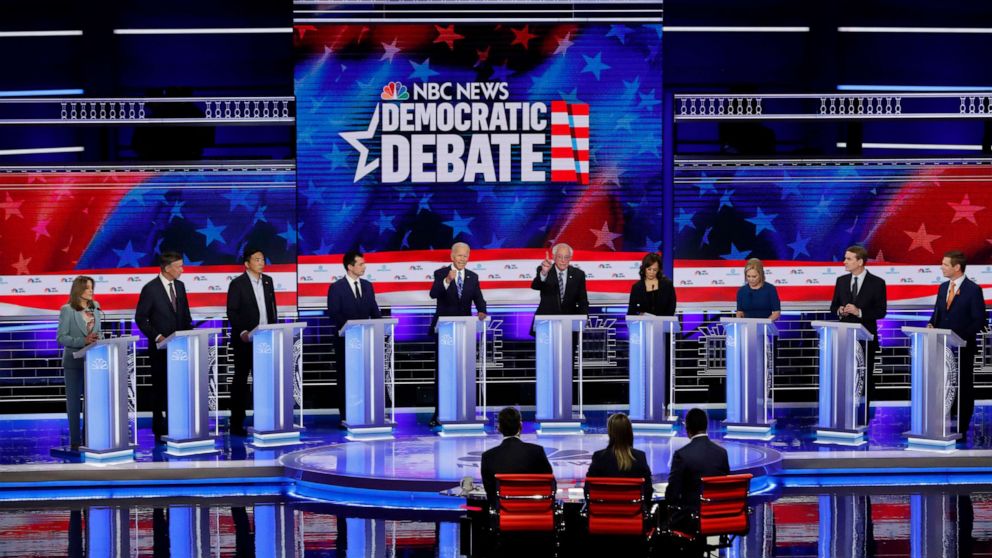[ad_1]
Here’s ABC News’ fact check of the second of two Democratic presidential debates in Miami between former Vice President Joe Biden, Sen. Bernie Sanders, Sen. Kamala Harris, Mayor Pete Buttigieg, Sen. Michael Bennet, Sen. Kirsten Gillibrand, former Gov. John Hickenlooper, Rep. Eric Swalwell, author Marianne Williamson and entrepreneur Andrew Yang.
Interested in Democratic Party?
Add Democratic Party as an interest to stay up to date on the latest Democratic Party news, video, and analysis from ABC News.
Please refresh the page for updates.
FACT CHECK: Sanders on the U.S. paying highest prices in the world for prescription drugs
Sanders: “The function of the health care system today is to make billions in profits for the insurance companies and last year — if you can believe it — while we pay the highest prices in the world for prescription drugs and I will lower prices in half in this country top 10 companies made $69 billion in profit.”
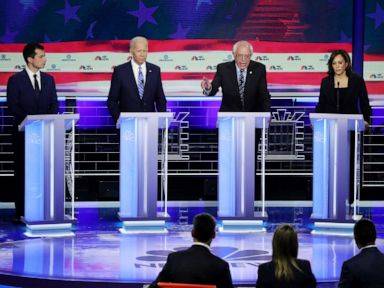 Drew Angerer/Getty Images
Drew Angerer/Getty Images
Sanders said on Thursday night that the United States pays the “highest prices in the world for prescription drugs,” which is generally true. When Health and Human Services looked at the costs of drugs mostly covered by Medicare, HHS Secretary Alex Azar said the agency found that Medicare paid the highest price for 19 out of 27 drugs compared to other developed countries, ABC News previously reported.
Additionally, a study in the Journal of the American Medical Association found that in 2016, “the United States spent nearly twice as much as 10 high-income countries on medical care and performed less well on many population health outcomes.”
Why is this? ABC News previously reported that drug companies say individuals in the United States generally get access to these drugs first and the money goes to research that often benefit American consumers.
-Anne Flaherty and Sophie Tatum
FACT CHECK: Buttigieg on support for pathway to legal immigration
Buttigieg: “The American people want a pathway to citizenship, they want protections for Dreamers.”
Buttigieg is correct that a majority of Americans want to find a way for the 10.5 undocumented immigrants already living and working in the U.S. to become legal.
According to a 2015 Associated Press-GfK poll, the majority of Americans — 54% — support a way for immigrants who are already in the country illegally to become citizens. That poll says 44% are opposed.
In a 2017 poll by AP and the NORC Center for Public Affairs Research, just 1 in 5 Americans said they wanted to deport young immigrants brought to the U.S. as children and are in the country illegally. Those young immigrants are often referred to as “Dreamers.”
-Anne Flaherty
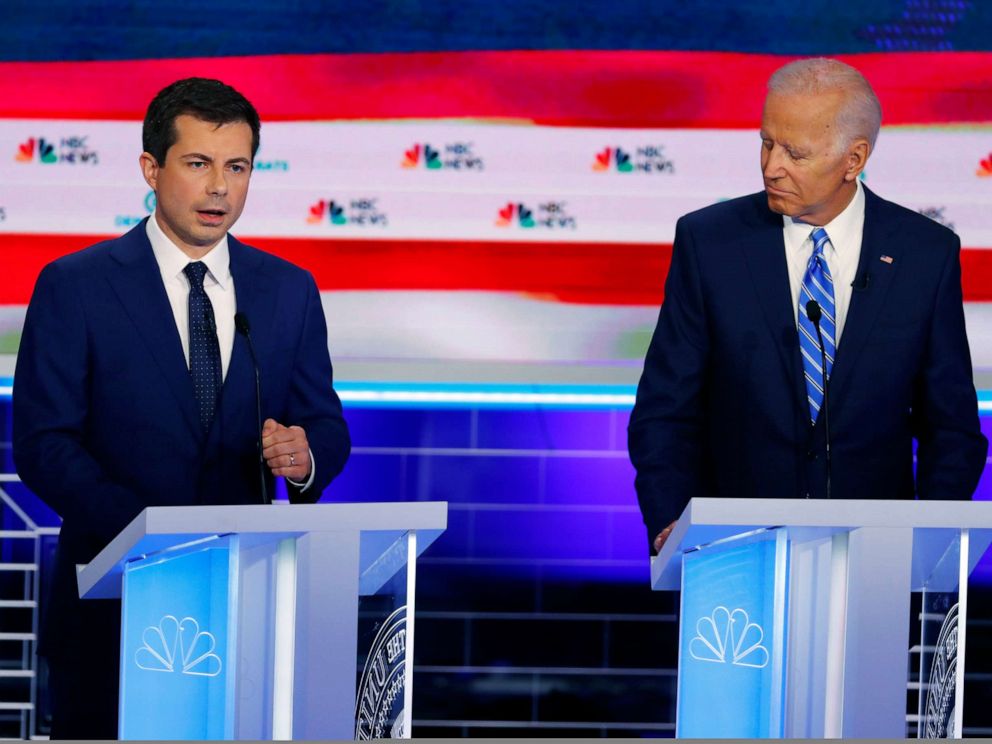 Wilfredo Lee/AP
Wilfredo Lee/AP
FACT CHECK: Yang on automation taking away jobs
Yang: “This is the move that we have to make, particularly as technology is now automating away millions of American jobs, it’s why Donald Trump is our president today. That we automated away four million manufacturing jobs in Michigan, Ohio, Pennsylvania and Wisconsin and we are about to do the same to millions of retail jobs, call center jobs, fast food, truck driver jobs and on and on through the economy.”
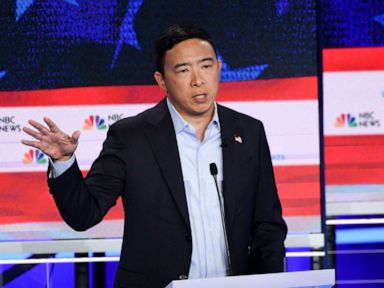 Saul Loeb/AFP/Getty Images
Saul Loeb/AFP/Getty Images
Yang’s platform line on automating jobs has merit.
From 2000 to 2010, the U.S. lost 5.6 million manufacturing jobs, according to a study by the Center for Business and Economic Research at Ball State University, as cited by the Financial Times in 2016. Of that 5.6 million, 85% — 4.76 million — were lost due to technological trade, including largely automation.
A 2019 Brookings Institution study said that Midwestern states would be hardest hit by automation, and a 2017 Brookings study found that industrial robots are highly populated around the Midwestern states, which could correlate with a loss of manufacturing jobs.
In his campaign speeches, Yang has referenced reports from MIT, McKinsey & Company and Bain & Company about the future of manufacturing jobs. An Oxford Economics report released this week claimed that 20 million manufacturing jobs would be displaced by machines by 2030 worldwide. A 2017 McKinsey study found that 75 million to 375 million people worldwide may need to change jobs and get new skills by 2030.
However, while studies show jobs will be lost do automation, they also point towards job growth. A 2018 World Economic Forum report found that while 75 million jobs may be lost in the shift to automation, 133 million more jobs may emerge.
– Alexandra Svokos
FACT CHECK: Sanders says 83% of Trump tax benefits go to the top 1%
Sanders: “Well, President Trump, you are not standing up for working families when you try to throw 32 million people off their health care that they have and that 83% of your tax benefits go to the top 1%.”
Analysis from the left-leaning Tax Policy Center found that the top 1% of Americans would receive 82.8% of President Donald Trump’s tax benefits. The study also finds that under the first few years of the bill, benefits of the law are still aimed towards upper-middle and upper class Americans.
All income groups under the tax plan immediately see some sort of tax cut, but the biggest cuts are reserved for the ultra-wealthy. More than half of American households, however, would eventually see a tax increase, according to the report by 2027.
-Matthew Vann
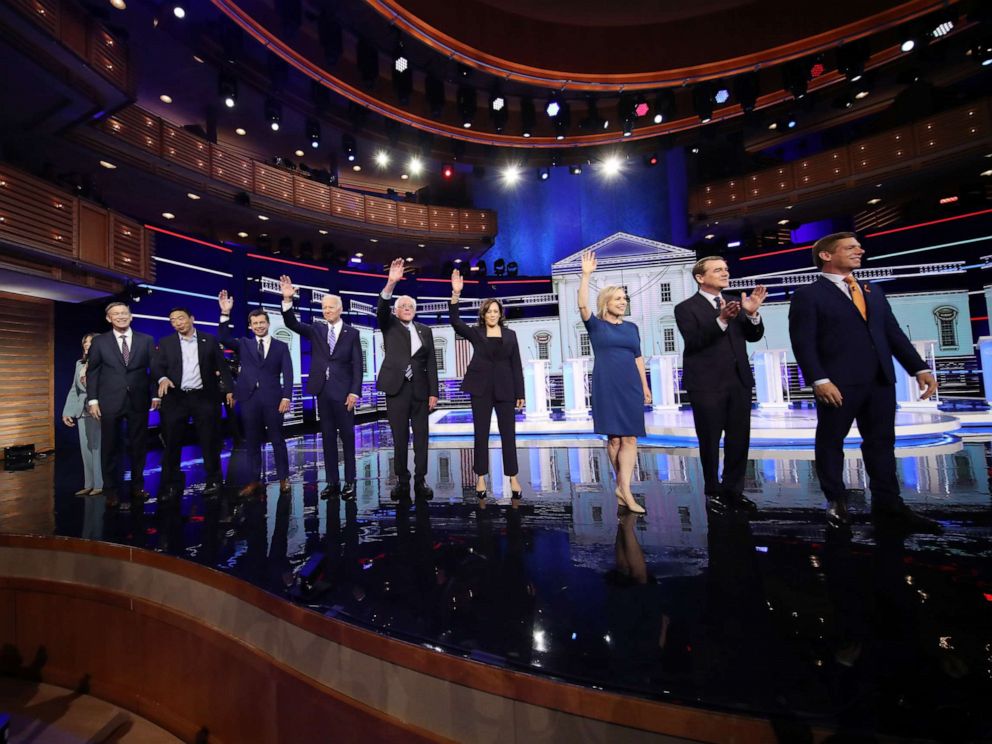 Joe Raedle/Getty Images
Joe Raedle/Getty Images
FACT CHECK: Sanders on wealthiest three Americans vs the bottom 50% of Americans
Sanders: “We have a new vision for America and at a time when we have three people in this country owning more wealth than the bottom half of America, while 500,000 people are sleeping out on the streets today, we think it is time for change, real change.”
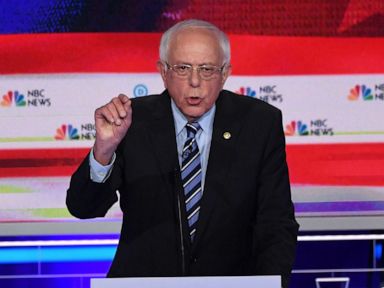 Saul Loeb/AFP/Getty Images
Saul Loeb/AFP/Getty Images
Sanders is likely citing a 2018 Forbes estimate of the three wealthiest individuals in the U.S. Jeff Bezos, Bill Gates and Warren Buffett had a combined net worth of $330 billion. According to Forbes, Bezos and his family have approximately $160 billion, Gates has $97 billion and Buffett had an estimated net worth of $88.3 billion.
The 2016 Federal Reserve Survey of Consumer Finances estimated that the bottom 50% of Americans held a combined net worth of $245 billion.
A 2015 study from the U.S. Department of Housing and Urban development reported 500,000 people were homeless during the year 2015.
-Adam Kelsey
[ad_2]
Source link

